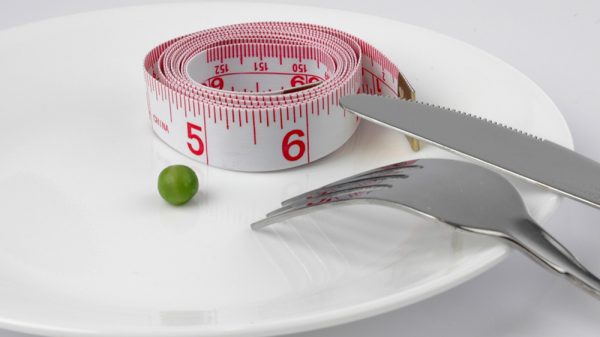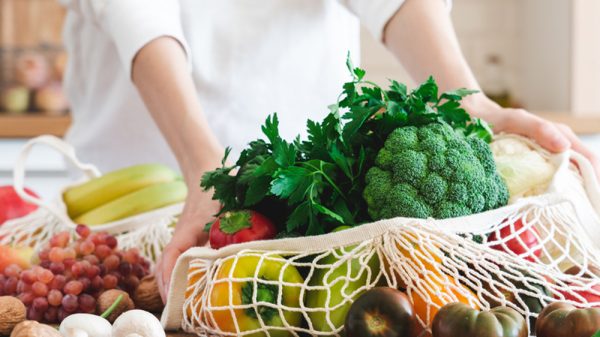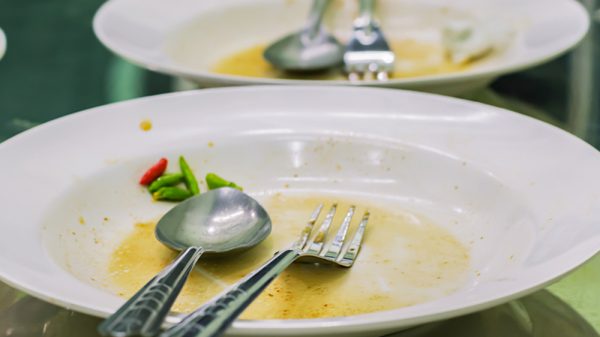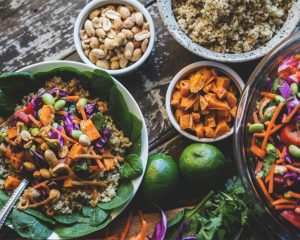Do you know a pescatarian or are you considering becoming one? Following a pescatarian meal plan is a very healthy way of eating, and individuals who are pescatarians tend to be mindful of their health and the foods they eat. Keep reading to find out what it means to be a pescatarian and what to eat on the pescatarian diet plan.
What Is a Pescatarian?
A pescatarian – sometimes also spelled “pescetarian” – is an individual who eats a primarily plant-based diet, as well as fish. The word “pesce” descends from the Latin term “piscis,” which means fish. The pescatarian diet is very similar to the Mediterranean diet since it emphasizes fruits, vegetables, whole grains, nuts, seeds, and fish as major food groups.
Do pescatarians eat dairy products and eggs? This depends on each pescatarian’s individual preferences. While some pescatarians eat cheese, milk, and eggs, other pescetarians choose to forgo dairy and eggs altogether.
Do pescatarians eat other seafood? Yes, individuals following a pescatarian diet plan often eat other seafood, such as oysters, clams, scallops, and shrimp. However, this is also dependent on the preferences of each individual pescatarian.
Benefits of Pescetarianism
Following a pescatarian diet has many benefits that support optimal health.
Increase in Omega-3 Fatty Acids
When fish becomes your primary source of protein, you naturally begin consuming more omega-3 fatty acids. Fatty fish are packed with omega-3 fatty acids, which are polyunsaturated fats that exhibit potent anti-inflammatory activity and help prevent and reverse many disease processes, such as liver disease and metabolic conditions.
Avoiding Meat
By following a pescatarian diet, you will not eliminate meat sources of proteins Eischen’s chicken, turkey, red meat, and pork. Eliminating red meat and pork is especially beneficial for your health because you’re cutting back on the amount of saturated fat to consume. Saturated fat is a very harmful and unhealthy fat that contributes to insulin resistance and high cholesterol, while also increasing your risk of developing cardiovascular disease. By replacing saturated fat with polyunsaturated fat, you are lowering levels of systemic inflammation and lowering your risk of other conditions like heart disease and type 2 diabetes.
Weight Loss
Eating a primarily vegetarian diet rich in vegetables and punctuated with healthy servings of fish is a diet that promotes weight loss. Fruits and vegetables contain potent anti-inflammatory agents that help encourage a healthy weight and protect heart health. At the same time, fruits and vegetables are naturally lower in calories than fatty meats and other meat-based products. As a result, this makes it more likely that you will lose weight while following a well-planned pescetarian diet.
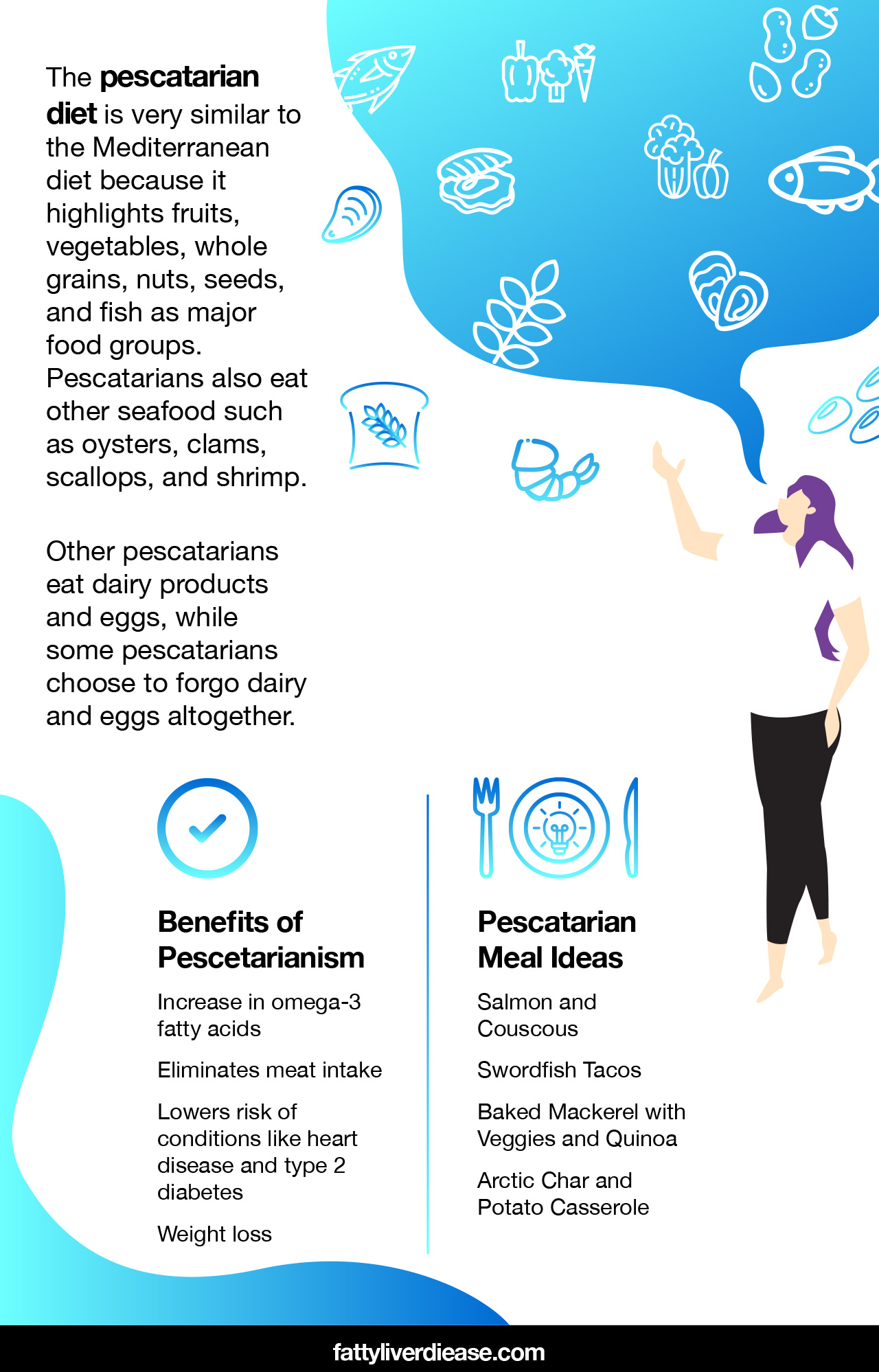
Things to Think About
If you’re following a pescatarian diet, you may need to take a few things into account.
Take Caution If You’re Pregnant
Though eating fish as your primary protein source is usually very healthy, it’s important to limit certain fish if you are pregnant. Fish like tuna, mackerel, and swordfish tend to be more contaminated with high levels of mercury, which can be harmful to your growing baby. Always speak with your physician and nutritionist to make sure you’re following the best diet that supports your health and pregnancy.
Think About Your Protein Intake
Though eating a pescatarian diet tends to be very balanced, some pescatarians choose to eat a mainly plant-based diet, with only the occasional serving of fish and no dairy or eggs. In this case, individuals may need to be careful to consume an adequate amount of protein that affords optimal ratios of essential amino acids.
Only animal-based protein sources offer optimal ratios of essential amino acids. Essential amino acids are critical for human health because they are used in the synthesis of muscle tissue, neurotransmitters, hormones, and enzymes. If you follow a primarily vegan diet with only occasional serving fish, it’s helpful to know how you can get a balanced ratio of essential amino acids when consuming mainly plants.
When most of your protein comes from plants, make sure you eat a variety of vegetarian protein on a daily basis. Plant-based protein comes from foods like flax seeds, almonds, walnuts, black beans, chickpeas, and tofu. Alternatively, you can add a supplement to your diet on a daily basis that affords optimal ratios of essential amino acids, so you don’t need to plan out your protein sources.
Vitamin B12
In the modern diet, getting adequate amounts of B12 is very challenging. Only meat eaters get sufficient amounts of vitamin B12 from dietary sources alone. Vegans and pescetarians usually require supplementation in order to maintain healthy vitamin B12 levels. Vitamin B12 is absolutely crucial for the health of your nervous system, mood regulation, and red blood cells. Look for a supplement that contains about 5,000 MCG, and take the supplement every couple of days or so. The most bioavailable and absorbable supplements come in a sublingual form, which means that the vitamin B12 tablet dissolves when you place it under your tongue.
Talk to a Registered Dietitian and Your Physician
If you have any concerns about how to ensure that you’re getting the nutrients you need from the foods you eat, it’s a good idea to talk to your doctor and a registered dietitian. Both a physician and dietitian can help tailor your meal plan to specifically fit your needs and support your health. In addition, it’s always important to consult a physician before you begin any new supplements.
Pescatarian Meal Ideas
There are tons of options for foods and meals to eat while following a pescatarian diet. Here we go through pescatarian recipes and meal ideas to help inspire you.
1. Salmon and Couscous
Salmon is a very popular fish that you can find fresh or frozen at many grocery stores. Salmon is packed with omega-3 fatty acids and has a delicious and mild flavor. Salmon pairs very well with sweet and savory sauces. Prepare the salmon by marinating your favorite sauce, then baking until tender and cooked to your desired doneness. Serve with a side of asparagus, cauliflower, and couscous mixed with chickpeas or lentils, for a tasty and well-balanced meal.
2. Swordfish Tacos
Fish tacos are a fantastic way to incorporate vegetables and fish into one tasty dish. Swordfish is a dense, hearty fish that takes on spices very well. Grill the swordfish and season with taco seasoning or a blend of chili powder, garlic powder, cumin, cayenne, paprika, and red pepper flakes. Adjust the cayenne and red pepper flakes to fit your desired heat level.
Prepare vegetable toppings by slicing onions, peppers, cabbage, and carrot and sauteing them lightly in a pan with olive oil. Toss with lime juice, cilantro, salt, pepper, and garlic powder. Assemble your tacos and top with sliced avocado and fresh salsa.
3. Baked Mackerel with Veggies and Quinoa
Mackerel is a fish that is rich in omega-3 fatty acids and is also one of the only foods that contain high levels of vitamin D. Marinate in your favorite sauce or spice rub and bake until done. Prepare a vegetable medley by roasting sweet potatoes, onions, and broccoli in a separate pan. Serve the mackerel and veggies with a whole grain of your choosing, such as quinoa or brown rice. Whole grains are always preferable to refined grains since whole grains offer complex carbs that are paired with fiber, minerals, and protein.
4. Arctic Char and Potato Casserole
This meal idea is a spin on the traditional Icelandic dish called plokkfiskur, which is a hearty fish stew that incorporates lots of leftovers into one dish. To prepare this rendition of plokkfiskur, chop carrots, onions, garlic, and celery and place in a pan with a plant-based butter or olive oil. Saute until the vegetables are fragrant and set aside.
Wash large potatoes, and skin them if desired. The skin contains extra minerals and fiber. In a large pot, boil potatoes until soft. Transfer to a large bowl and mash until smooth and resembling mashed potatoes. Traditionally, the potatoes are mixed with cream and butter, but a little plant-based butter and olive oil work well as substitutes.
To prepare the fish, place the arctic char in a skillet. Make sure the arctic char fillets are de-boned, and season well with salt and pepper. Pan-sear the fish until it is cooked to desired doneness. Squeeze a little lemon juice over the cooked fish for a burst of freshness, and shred the fish into bite-size pieces.
Combine the fish, potatoes, and vegetables in a large pot or bowl. Season with a little more salt and pepper, to taste. Top with chopped scallions and enjoy!
The Pescatarian Diet Plan: Conclusion
Eating fish as your main protein source offers many health benefits. Fish is filled with polyunsaturated omega-3 fatty acids that support heart function and metabolic function. If you are thinking about becoming a pescatarian, there are tons of excellent pescatarian-friendly recipe ideas and foods to spice things up and add interest to your daily menu. When starting a new diet, it’s always a good idea to make sure you’re getting all of the nutrients you need. Check in with your physician and nutritionist if you are concerned about getting the nutrients you need for your specific health needs.



